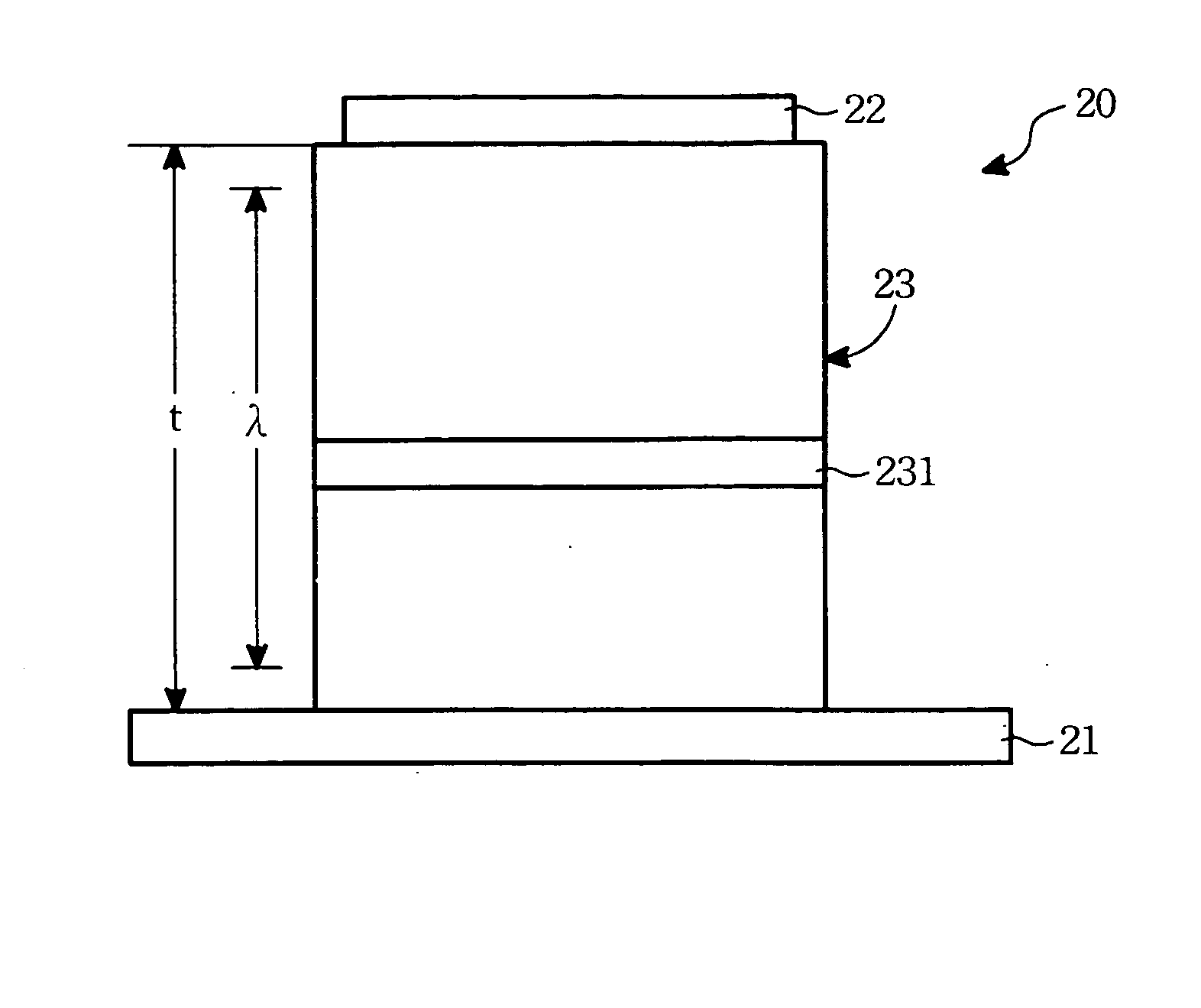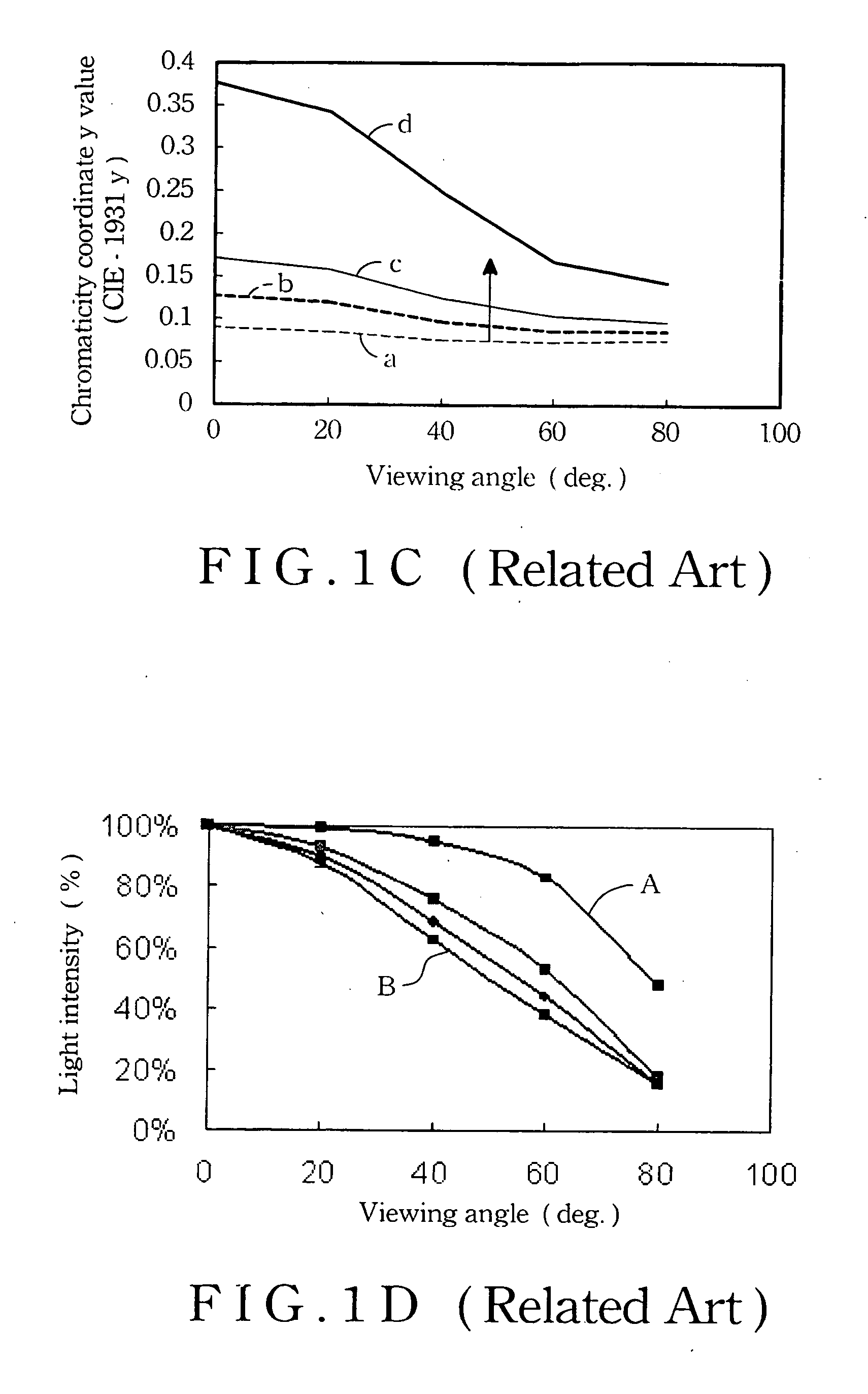Organic light emitting device
a light-emitting device and organic technology, applied in the direction of organic semiconductor devices, discharge tubes/lamp details, discharge tubes luminescnet screens, etc., can solve the problems of color coordinate shift and light color change with thickness, and achieve the effect of improving the white balance of the oled and attenuating the light intensity, reducing optical interference, and increasing thickness
- Summary
- Abstract
- Description
- Claims
- Application Information
AI Technical Summary
Benefits of technology
Problems solved by technology
Method used
Image
Examples
Embodiment Construction
[0032] Refer to FIG. 2, the OLED 20 of the present invention includes a transparent electrode 21, a reflective electrode 22, and an organic light emitting element 23. The organic light emitting element 23 is interposed between the transparent electrode 21 and reflective electrode 22, and includes at least one emissive material layer 231 that is doped with an emissive dopant. It is emphasized that the organic light emitting element 23 has a thickness t greater than the major wavelength λ of light emitted by the OLED 20. Because the wavelength of the visible light is from 380 to 700 nm, the thickness t of the organic light emitting element 23 can be reasonably defined as 380 to 10000 nm. Under the reasonable thickness, the absorbance of the light can be also controlled.
[0033] The OLED has four types such as the bottom emission, the inverted bottom emission, the top emission and the inverted top emission. In various types of OLEDs, the reflective electrode may be taken as an anode or ...
PUM
 Login to View More
Login to View More Abstract
Description
Claims
Application Information
 Login to View More
Login to View More - R&D
- Intellectual Property
- Life Sciences
- Materials
- Tech Scout
- Unparalleled Data Quality
- Higher Quality Content
- 60% Fewer Hallucinations
Browse by: Latest US Patents, China's latest patents, Technical Efficacy Thesaurus, Application Domain, Technology Topic, Popular Technical Reports.
© 2025 PatSnap. All rights reserved.Legal|Privacy policy|Modern Slavery Act Transparency Statement|Sitemap|About US| Contact US: help@patsnap.com



